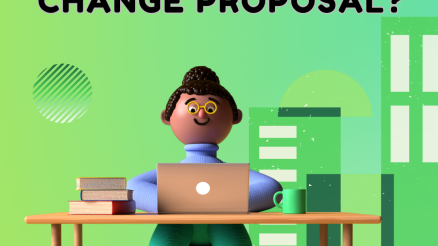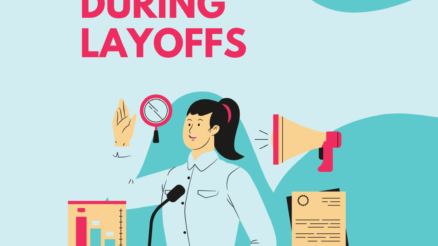Have you ever found yourself frustrated by someone’s unwillingness to change a certain behavior despite your best efforts?
Whether it’s trying to encourage healthier habits, alter perspectives, or inspire a shift in mindset, the challenge of changing people’s behavior is a universal experience.
And it’s often said that you can’t change people’s behaviour
We’ve all been there, armed with advice, armed with good intentions, only to face the formidable wall of resistance.
But why is it so challenging to effect change in others?
In this exploration, we’ll dive into the intricate web of factors that contribute to the complexity of human behavior.
Join us on a journey to understand why you can’t change people’s behaviour.
Understanding the complexity of human behavior
Understanding the complexity of human behavior is paramount if want to change behaviour of an individual or a group of individuals.
This comprehension holds significance for several reasons, each contributing to the depth of our understanding and the effectiveness of our efforts to influence change.
First and foremost, recognizing the intricate interplay of psychological, social, and biological factors allows us to approach behavior with empathy rather than judgment.
Moreover, grasping the complexity of human behavior is essential for those seeking to promote positive change.
Whether in personal relationships, community dynamics, or societal structures, attempts at transformation are more likely to succeed when grounded in a comprehensive understanding of the underlying factors at play.
This awareness enables us to tailor interventions, education, and support systems that resonate with the intricacies of individual experiences, making change a more feasible and sustainable endeavor.
In essence, appreciating the complexity of human behavior equips us with the knowledge needed to navigate the challenges of influence, persuasion, and collaboration.
Read more about: Importance of Behaviour Change Communication
Reasons behinds the Complexity of Human Behavior
Human behaviour is generally defined by psychological, social influences and biological factors. Let’s learn each of three broad factors.
1. Psychological factors
Psychological factors play a crucial role in shaping the complexity of human behavior, influencing the way individuals perceive, interpret, and respond to various stimuli.
Here’s a breakdown of three key psychological factors:
Deep-Rooted Beliefs and Values
Deep-seated beliefs and values are the foundational principles that individuals hold, often developed over years through experiences, upbringing, and cultural influences.
These beliefs create a lens through which people view the world, influencing their attitudes, decisions, and actions.
These convictions are often resistant to change, as they are integral to one’s identity.
For example, someone raised with a strong work ethic may approach challenges differently than someone whose upbringing emphasized creativity or cooperation.
Emotional Triggers
Certain experiences or situations can trigger emotional responses that, in turn, guide decision-making and actions.
Positive emotions such as joy, love, or excitement, as well as negative emotions like fear, anger, or sadness, can significantly impact behavior.
For instance, someone with a fear of public speaking may avoid opportunities that involve addressing a large audience due to the emotional discomfort associated with it.
Recognizing and understanding these emotional triggers is crucial for comprehending why people act in specific ways and for developing strategies to influence positive change.
Cognitive Biases
Cognitive biases refer to the systematic patterns of deviation from norm or rationality in judgment, often influencing decision-making.
Humans are prone to various cognitive biases that can impact their perceptions and interpretations of information.
For example, confirmation bias leads individuals to interpret information in a way that confirms their preexisting beliefs, while the availability heuristic causes people to rely on readily available information rather than seeking a comprehensive understanding.
2. Social influences
Social influences play a pivotal role in shaping human behavior, reflecting the impact of one’s surroundings and interpersonal relationships.
Here’s an exploration of three key social influences:
Cultural Norms
Cultural norms encompass the shared beliefs, values, behaviors, and customs that characterize a particular group or society.
These norms serve as a guide for individuals within that culture, influencing their choices and actions.
What is considered acceptable or taboo, normal or deviant, is often defined by these cultural expectations.
For example, cultural norms may dictate the appropriate ways to express emotions, the expected level of formality in communication, or the roles assigned to individuals based on factors like gender or age.
Peer Pressure
Peer pressure refers to the influence exerted by one’s peers, typically of similar age or social status, to conform to certain behaviors, attitudes, or expectations.
It can manifest in both positive and negative ways.
For instance, positive peer pressure may encourage individuals to adopt healthy habits or pursue academic achievements, while negative peer pressure might lead to engagement in risky behaviors or the acceptance of harmful norms.
Peer pressure often stems from the desire to fit in, gain approval, or avoid rejection.
Family Dynamics
Family dynamics encompass the patterns of interactions, roles, and relationships within a family unit.
The family serves as the primary socialization agent, shaping individuals’ values, beliefs, and behaviors from a young age.
Family dynamics can influence behavior through various mechanisms, such as the modeling of behavior by parents, the establishment of rules and expectations, and the communication styles employed within the family.
For example, a family that prioritizes open communication and mutual support may contribute to the development of individuals who are more expressive and collaborative in their interactions.
Recognizing the influence of family dynamics provides insight into the roots of certain behavioral patterns and offers opportunities for targeted interventions or support.
3 Biological factors
Biological factors are essential contributors to the complexity of human behavior, shaping individuals at the genetic, neurological, and hormonal levels.
Here’s an exploration of three key biological factors:
Genetic Predispositions
Genetic predispositions refer to the hereditary influences encoded in an individual’s DNA that can affect various aspects of behavior.
Certain traits, tendencies, or susceptibilities may be inherited from one’s biological parents.
These genetic factors can contribute to the likelihood of developing certain characteristics, such as intelligence, temperament, or vulnerability to specific mental health conditions.
While genetics provide a foundational blueprint, environmental factors also interact with genetic predispositions to influence how traits manifest.
Neurological Processes
The brain and its intricate neurological processes are central to understanding human behavior.
Neurons, neurotransmitters, and neural circuits play key roles in cognitive functions, emotional regulation, and decision-making.
Structural and functional differences in the brain can impact an individual’s behavior.
For instance, variations in the prefrontal cortex, responsible for decision-making and impulse control, can influence an individual’s ability to exhibit self-discipline.
Hormonal Influences
Hormones are chemical messengers produced by glands in the endocrine system, and they play a significant role in regulating various bodily functions, including behavior.
Hormonal influences can impact mood, stress response, and even social behaviors.
For example, the hormone cortisol is associated with the body’s stress response, and its fluctuations can influence an individual’s reactions to challenging situations.
Sex hormones such as testosterone and estrogen contribute to the development of gender-specific behaviors and characteristics.
Resistance to Change
Comfort Zones and Familiarity
Comfort zones are psychological spaces where individuals feel at ease, in control, and familiar with their surroundings or routines.
Within these comfort zones, people experience a sense of security and predictability, as the elements within this zone are well-known and have a reduced level of perceived risk.
When faced with the prospect of change, individuals often grapple with the idea of stepping outside their comfort zones.
The unknown elements associated with change can create discomfort, as it introduces uncertainty and challenges the sense of control that comes with familiarity.
Whether it’s a change in routine, environment, or behavior, the inclination to stay within the boundaries of what is known and comfortable can lead to resistance, even if the change may ultimately be beneficial.
Anxiety about Change
Anxiety about change is a common emotional response triggered by the uncertainty and unpredictability associated with unfamiliar situations.
Change introduces a level of ambiguity and a departure from the routine, which can evoke anxiety in individuals.
The fear of the unknown aspects of change, coupled with concerns about potential negative outcomes, can lead to heightened stress levels and apprehension.
This anxiety may manifest in various ways, including reluctance to embrace new opportunities, avoidance of unfamiliar situations, or a general sense of unease.
Lack of awareness
Ignorance about the Need for Change
Lack of awareness about the need for change occurs when individuals are either uninformed or underestimate the necessity of altering their current behaviors, habits, or perspectives.
It may stem from a lack of exposure to information, denial of the severity of a situation, or a general resistance to acknowledging the need for improvement.
Ignorance about the need for change can be a significant barrier because individuals may not see the relevance or urgency of modifying their behavior.
Overcoming this hurdle involves effective communication, education, and raising awareness about the benefits and importance of the proposed changes.
Unconscious Habits and Routines
Unconscious habits and routines refer to automatic, ingrained behaviors that individuals perform without conscious thought or deliberate intention.
These habits often develop over time through repetition and become deeply embedded in daily life.
The challenge arises when these habits contribute to undesirable behavior patterns, and individuals may be unaware of the impact these routines have on their well-being or the well-being of those around them.
Breaking free from unconscious habits requires heightened self-awareness and a conscious effort to recognize and modify these automatic behaviors.
Defense mechanisms
Cognitive Dissonance
Cognitive dissonance is a psychological phenomenon that occurs when individuals experience discomfort or tension resulting from holding conflicting beliefs, attitudes, or values.
When faced with information or situations that challenge their existing views or behaviors, people may experience cognitive dissonance as they strive to maintain internal consistency.
To resolve this discomfort, individuals may adjust their beliefs or attitudes to align with their actions, or they may change their behaviors to align with their beliefs.
Cognitive dissonance can be a significant defense mechanism because it helps individuals maintain a sense of psychological equilibrium by reducing the conflict between their thoughts and actions.
Rationalization and Justification
Rationalization and justification are defense mechanisms that involve providing logical or reasonable explanations for behaviors or decisions that may be driven by underlying emotions, biases, or irrational motives.
When individuals engage in actions that conflict with their self-image or societal norms, they may employ rationalization to make those actions seem more acceptable or justifiable.
This can involve downplaying the significance of the behavior, emphasizing external factors, or reframing the situation to align with a more favorable narrative.
By rationalizing and justifying their actions, individuals protect their self-esteem and avoid facing the discomfort of acknowledging that their behavior may be inconsistent with their values.
External Factors
Limited Resources
Limited resources refer to situations where individuals or communities face constraints in terms of material, financial, or social assets.
These constraints can significantly impact behavior, as individuals may be forced to prioritize basic needs over other considerations.
In an environment with limited resources, people may adopt behaviors focused on survival and immediate necessities, often at the expense of long-term planning or adherence to certain societal norms.
For instance, individuals facing economic hardships may prioritize securing food and shelter over investing time and energy in activities that could lead to personal development.
Lack of Access to Opportunities
A lack of access to opportunities is another external factor that can shape and limit behavior.
Opportunities encompass a wide range of possibilities, including education, employment, healthcare, and social engagement.
When individuals or communities face barriers that prevent them from accessing these opportunities, it can lead to a restricted set of behavioral choices.
For example, if someone doesn’t have access to quality education or job opportunities, their behavioral options may be constrained to what is available within their immediate environment.
Lack of access to opportunities can contribute to the perpetuation of certain behaviors, as individuals may be limited by their circumstances in terms of the choices they can make.
Societal expectations
Stigma and Judgment
Societal expectations often come with implicit norms and standards that influence individual behavior.
Stigma and judgment refer to the negative perceptions, stereotypes, and criticisms that individuals may face when their behavior deviates from societal norms.
This can create a powerful force discouraging individuals from expressing their true selves or making choices that diverge from conventional expectations.
For example, individuals experiencing mental health challenges may hesitate to seek help due to the stigma associated with mental health issues.
Stigma and judgment can act as formidable barriers to behavior change by fostering fear of social rejection or alienation.
Institutional Barriers
Institutional barriers refer to the systematic obstacles embedded within societal structures that limit opportunities, access, or rights for certain groups of individuals.
These barriers can be present in various institutions, including government, education, healthcare, and the workplace.
For example, discriminatory policies, unequal access to education, or workplace biases can constrain individuals’ ability to make choices that align with their values or aspirations.
Institutional barriers not only shape individual behavior but also contribute to the perpetuation of inequalities and inequities within society.
The Role of Motivation
Intrinsic vs. Extrinsic Motivation:
In the context of behavior change, motivation plays a crucial role, and it can be categorized into intrinsic and extrinsic motivation.
Intrinsic motivation refers to the internal drive that comes from personal satisfaction, curiosity, or a genuine interest in an activity.
Individuals driven by intrinsic motivation are more likely to engage in behavior willingly because they find the activity inherently rewarding or enjoyable.
On the other hand, extrinsic motivation involves external factors such as rewards, recognition, or avoidance of punishment.
While extrinsic motivation can be effective in initiating behavior change, sustainable change often relies on cultivating intrinsic motivation.
The Impact of Personal Goals
Personal goals serve as powerful motivators that guide behavior and decision-making.
When individuals set clear and meaningful goals, they gain a sense of purpose and direction.
Goals provide a framework for individuals to organize their efforts and prioritize actions that contribute to goal attainment.
Whether these goals are related to health, career, relationships, or personal development, they can significantly influence behavior.
For example, someone with a goal of adopting a healthier lifestyle may be motivated to exercise regularly and make dietary changes.
The Role of Rewards and Consequences
Rewards and consequences are external factors that can influence behavior by providing incentives or deterrents.
Rewards, such as praise, recognition, or tangible benefits, can reinforce positive behaviors, making individuals more likely to repeat them.
Conversely, consequences, whether positive or negative, act as motivators by associating certain behaviors with favorable or unfavorable outcomes.
However, it’s essential to consider the type and timing of rewards and consequences, as their effectiveness can vary.
Positive reinforcement tends to be more effective than punishment, and immediate feedback is generally more impactful.
Final Words
So, while changing people’s behavior may be challenging, it is not insurmountable. As we strive to comprehend the depth of these influences, we unlock the potential for compassionate interventions, dialogue, and support systems that empower individuals to embark on their unique journeys of change.
Let’s engage in open conversations, promote awareness, and encourage environments that nurture positive change. By embracing the complexity of human behavior and working collectively to dismantle barriers, we pave the way for a more compassionate and understanding world—one where the question is not just why change is challenging but also how we can collectively support each other on the transformative journey.



